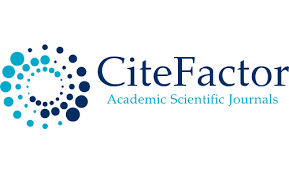Specific Features Of The Term Formation In English
Keywords:
terminology, affixation, conceptAbstract
This article explores the specific linguistic and structural features of term formation in English. As terminology serves as the cornerstone of scientific and technical communication, understanding how terms are created, adapted, and standardized is vital across disciplines. This study examines the morphological, syntactic, and semantic mechanisms involved in English term formation, analyzes trends such as borrowing, compounding, and affixation, and highlights how technological innovation and globalization influence terminological development. The findings demonstrate that term formation in English is dynamic, systematic, and increasingly influenced by interdisciplinary and intercultural factors.
References
Cabré, M. T. (1999). Terminology: Theory, Methods and Applications. John Benjamins Publishing.
Crystal, D. (2019). The Cambridge Encyclopedia of the English Language. Cambridge University Press.
Danieva M.Dj. The multifaceted nature of language. International journal of advanced research in
education, technology and management. Vol..4, Issue 1 ISSN:2349- 0012. I.F. 8.1. 2025. -P. 167-176
Daniyeva M.Dj. Applied Linguistics. -Karshi: Tafakkur ziyosi, 2025. – 135 p.
Daniyeva M.Dj. Thе еvоlutiоn thеоrу of language// The 3rd International scientific and practical
conference “Global trends in the development of educational systems” ISBN – 979-8-89692-741-9 DOI
– 10.46299/ISG.2025.1.3. Bergen, Norway, 2025. – P. 137-141.
IATE (InterActive Terminology for Europe). https://iate.europa.eu
ISO 704:2009. Terminology work — Principles and methods.
Oxford English Dictionary Online. https://www.oed.com
Sager, J. C. (1990). A Practical Course in Terminology Processing. John Benjamins.
Downloads
Published
Issue
Section
License

This work is licensed under a Creative Commons Attribution-NonCommercial 4.0 International License.
User Rights
Under the Creative Commons Attribution-NonCommercial 4.0 International (CC-BY-NC), the author (s) and users are free to share (copy, distribute and transmit the contribution).
Rights of Authors
Authors retain the following rights:
1. Copyright and other proprietary rights relating to the article, such as patent rights,
2. the right to use the substance of the article in future works, including lectures and books,
3. the right to reproduce the article for own purposes, provided the copies are not offered for sale,
4. the right to self-archive the article.












